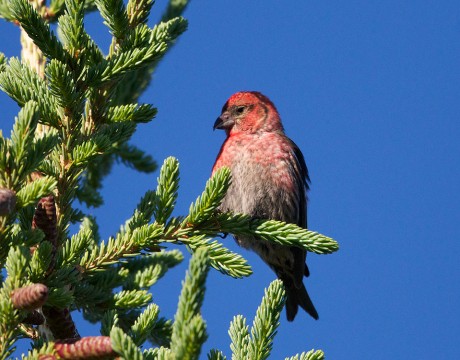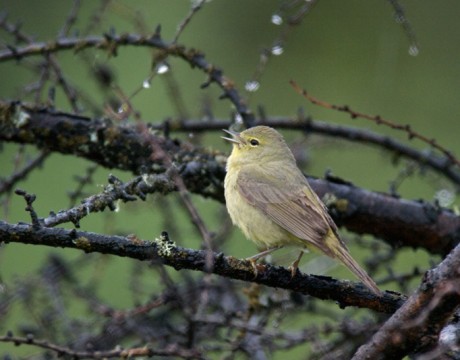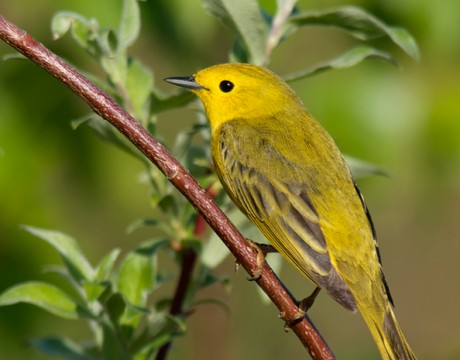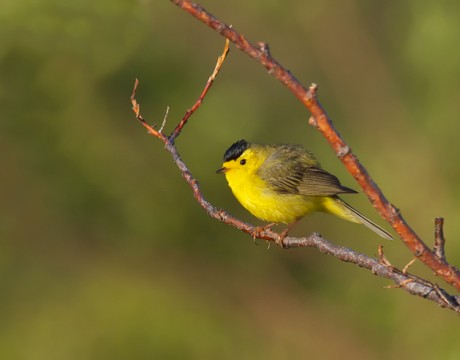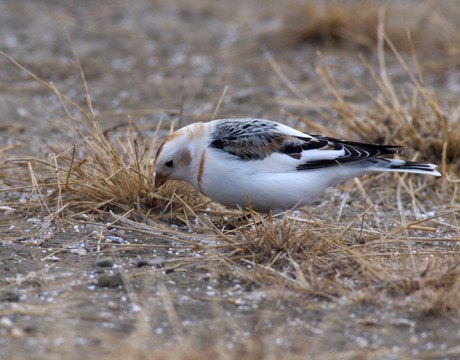Bird of the Week – Red-faced Cormorant
Alaska is the only place in North America where you can find the Red-faced Cormorant. Cormorants dive for fish, and nest on cliffs and ledges like the bluffs of St. Paul Island. The body appears black, but actually has a greenish-purplish cast, best seen on cloudy days. Camera geek stuff: f4, 1/8000 ISO100 For more bird photos, please visit Frozen Feather Images.
Bird of the Week – White-winged Crossbill
White-winged Crossbills are evergreen cone specialists. You can see that the bill does indeed cross at the tips, allowing the bird to lever open spruce and tamarack cone bracts to get to the seeds. The male is a lot flashier. White-winged Crossbills aren’t always easy to find. They follow the cone crop. When spruce and tamarack cone production is low, the birds will move elsewhere. This is a boreal species; further south, even in Southeast Alaska, the Red Crossbill is more common. Camera geek stuff: f5.6, 1/8000, ISO2500 For more bird photos, please visit Frozen Feather Images.
Bird of the Week – Glaucous Gull
The Glaucous Gull is Alaska’s largest pale gull. In shape and size, the Glaucous Gull is similar to the more familiar Herring Gull and Glaucous-winged Gull. But the Glaucous Gull has no black in its feathers, is quite pale and has a clear yellow iris. There are other very pale gulls in Alaska, but you won’t usually see them unless you are in Barrow in October. WC has no idea what this north coastal bird was doing at Galbraith Camp, along the Dalton Highway, 200 miles inland. Camera geek stuff: f11, 1/3200, ISO2500. For more bird photos, please visit Frozen Feather…
Bird of the Week – Orange-crowned Warbler
The Orange-crowned Warbler isn’t the flashiest bird in the boreal forest. The signature “orange crown” isn’t usually even visible, unless the male is defending territory. Look for the yellow undertail feathers and the short, dark eye line in an otherwise fairly drab bird. Camera geek stuff: f8, 1/200, ISO800 For more bird photos, please visit Frozen Feather Images.
Bird of the Week – Yellow Warbler
Widespread in Alaska – WC has seen them as far north as the Canning River on the north side of the Brooks Range – and conspicuous, the Yellow Warbler is one of the easier birds to identify among summer migrants. In breeding season, the male has strong, longitudinal orange streaking on his breast; the female’s are fainter. Of all of Alaska’s warblers, the Yellow Warbler is most often out in the open and most easily seen. WC has heard them called “Wild Canaries.” Other than being yellow birds, they have no relationship to true canaries. Camera geek stuff: f6.3, 1/320,…
Bird of the Week – Tennessee Warbler
Tennessee Warblers appear to be expanding their range into Interior Alaska. There are isolated places where they are found during Breeding Bird Surveys. For example, for the last seven years there’s been a Tennessee Warbler found on the Richardson Highway where the road drops down into Black Rapids Canyon. But they aren’t common. So it was a Birder Big Deal when this handsome fellow turned up outside of Fairbanks in 2008. Camera geek stuff: f5.7, 1/250, ISO 800 For more bird photos, please visit Frozen Feather Images.
Bird of the Week – Wilson’s Warbler
The small, handsome Wilson’s Warbler tends to stay in dense, brushy vegetation, often near water. But the male sometimes comes out into the open to sing, staking out his territory. The black cap identifies the adult male; the female is less commonly seen, but has the same yellow face and chest. It’s always a treat to see them. Camera geek stuff: f11, 1/250th, ISO 500. For more bird photos, please visit Frozen Feather Images.
Bird of the Week – Snow Bunting
The all-time champion far north-breeding songbird is the Snow Bunting. The Snow Bunting is the first migratory songbird to arrive in Interior Alaska in the spring, en route to mountaintops and the far northern edge of Alaska. They are a common sight in Barrow, Alaska; much less common any further south. This may be the song bird that breeds furthest north; they are found on the northerly shores of Greenland and the northern edge of the Canadian arctic archipelago. They are welcome sight in Fairbanks each year: they are the earliest sign winter might, just possibly, be ending. For more bird…
Forest Service Gutting 1st Amendment? Relax.
There’s a lot of outrage on the Internets these days about proposed plans by the U.S. Forest Service to gut the First Amendment by requiring permits for news media or nature photographers in Federally-designated wilderness areas on Forest Service lands. After reading a lot of the outrage, there are two things that come abundantly clear: None of the outraged have actually read the applicable Federal Register notice, and none of them are aware that this has been the status quo on Federal public lands for decades. Nothing on the face of the notice actually applies to the media. So, you have to look at the applicable proposed…
Bird of the Week – Horned Lark
The Horned Lark, like last week’s American Pipit, is a bird that migrates to Alaska and northern Canada to breed in the high alpine tundra, above tree line. This is North America’s only native lark. If anything, Horned Larks breed at even higher, sketchier altitudes than American Pipits. This bird was near the top of Whistle Ridge, at an elevation of about 5,000 feet. They succeed and prosper there, raising their young among the rocks, lichen and intermittent Dryas mat. Horned Larks don’t migrate quite as far south as American Pipits, although their winter ranges overlap. By the way, Horned Larks’ courtship…






